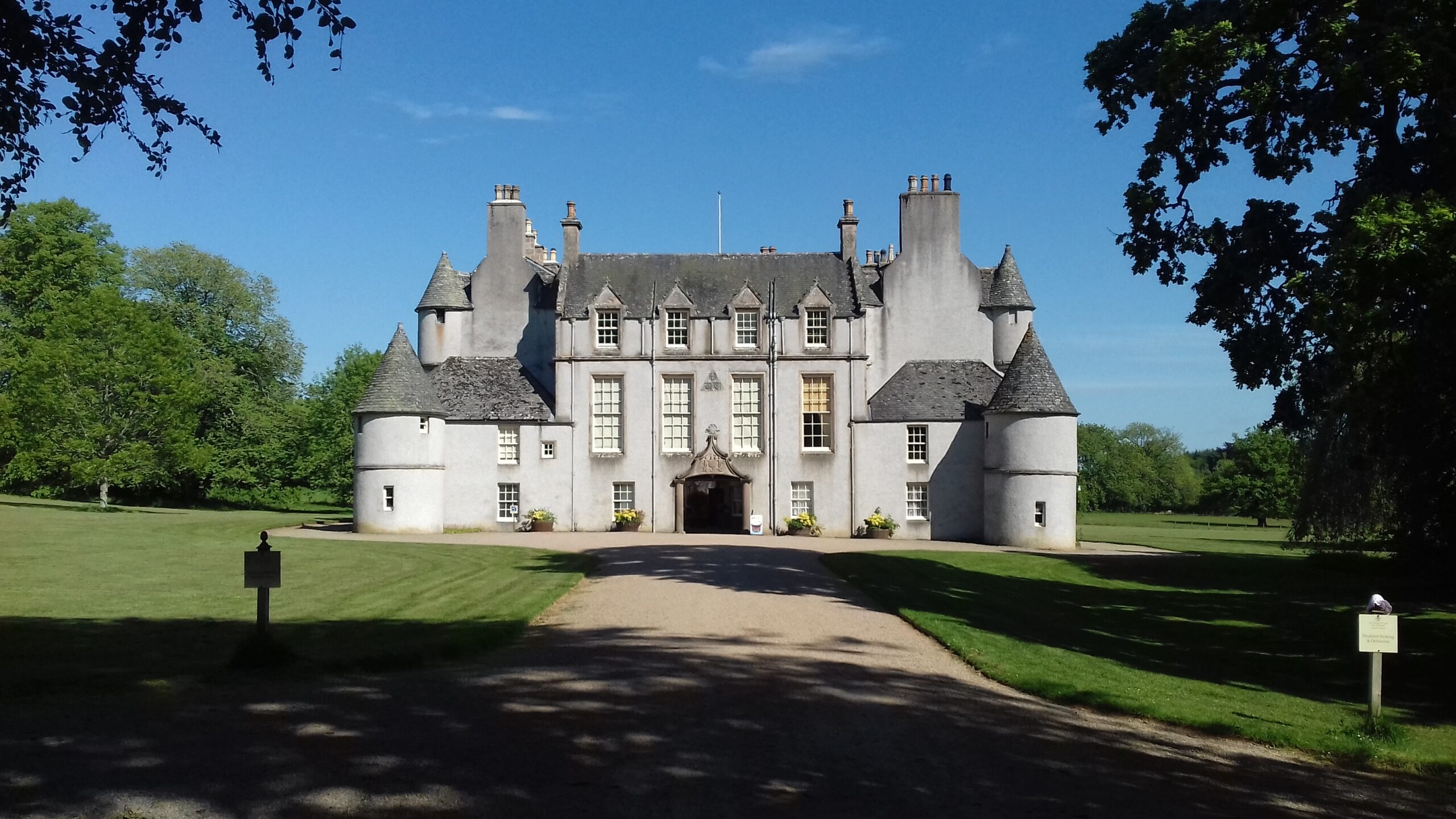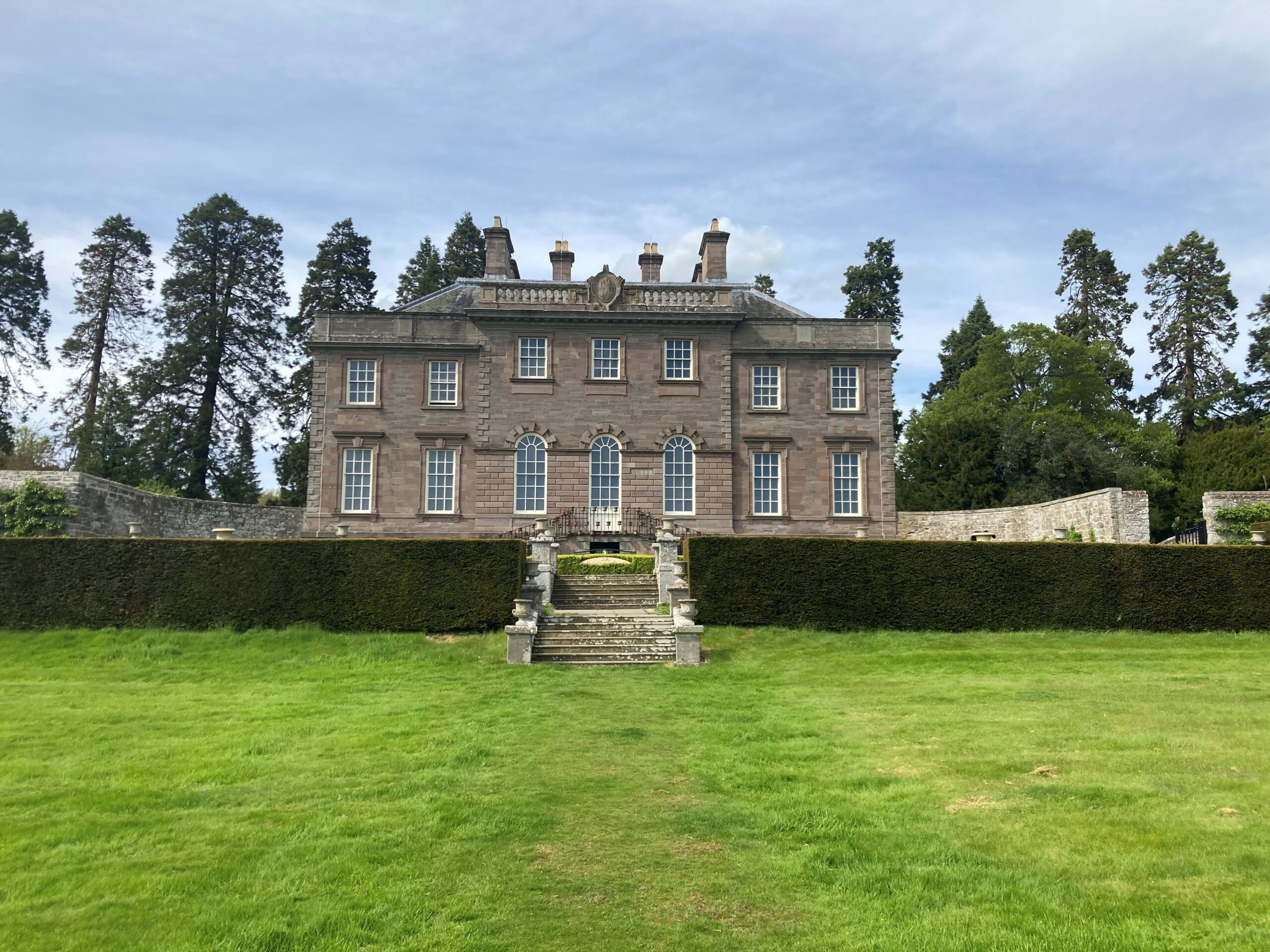An Afternoon at Leith Hall and House of Dun
In this blog, Saltire Scholar Eilidh shares her experience visiting the grounds and gardens of Leith Hall and the Angus Folk Collection at the House of Dun.
One of my favorite things about road trip adventures is having the freedom to visit places without planning extensively in advance. Some of my best memories are of places that I visited rather spontaneously, beginning by just jumping in the car, seeing where the road takes me, and then discovering something new. With my young adult membership, I have one less thing to think about whilst arranging a last-minute getaway, knowing I have the flexibility to visit some of Scotland’s finest heritage sites at such short notice. Following on from my visits to two famous castles in the morning, I was enthusiastic to see more Scottish Baronial architecture, so paid a visit in the afternoon to a fine example of the style, Leith Hall.
The grounds of Leith Hall were silent, except for the birdsong and the wind in the trees. I walked through the entrance into the courtyard, where I was greeted by a friendly ginger cat basking in the Scottish sun. Leith Hall was once the family home of the Leith-Hay family until it was donated to the Trust in 1945. Construction on the house began in 1650, with elements being added or adapted to the property throughout the centuries, such as the Georgian Wing and the recently renovated Edwardian rock garden. The gardens of Leith Hall are particularly lovely, with the moon gate, herbaceous borders in bloom, and the beautiful views of the surrounding hills of Aberdeenshire. I particularly enjoyed wandering around the Estate on this unusually sunny afternoon and taking in all aspects of the property. With thanks to a generous American supporter, the garden wall and ironwork were recently repaired, restoring and conserving this property for future visitors to enjoy.

Leith Hall
After my visit to Leith Hall, I drove down through Angus to House of Dun. The House of Dun was designed by William Adam on behalf of the Erskine family, with construction beginning in 1730. The House of Dun is an example of the typical styles that were popular in the Georgian era, such as the Palladian architectural elements. Whilst I arrived too late in the day to join one of the immersive tours of the House, I explored the courtyard and the Angus Folk Collection on display. The exhibit is a recent addition to the House of Dun: last fall the Collection was officially opened to the public by the National Trust for Scotland’s Patron, HRH The Prince Charles, Duke of Rothesay. The collection draws attention to the history of agriculture in Angus, with authentic artefacts depicting rural life from the past. From agricultural tools to historical kitchen equipment, what I enjoyed most about this exhibit was being able to understand history from an alternative perspective and gain a rich insight into the everyday lives of those living in rural Angus. My visit to the House of Dun concluded with a quick wander in the property’s woodlands, offering a moment’s peace before the last leg of the journey home and the inevitable rush-hour traffic I was going to face.

House of Dun
My drive back down to Glasgow wouldn’t have been complete without visiting some of Scotland’s grand estate houses, and Leith Hall and House of Dun were certainly prime examples. Whilst I wish I could have spent more time exploring the properties’ gardens, and had a chance to visit the interiors of the properties, I was pleasantly surprised in how much I learnt at the Angus Folk Museum and how much I didn’t know about historic agricultural life in Scotland. Once again, the spontaneity of my travels had paid off and I was fortunate to see some fascinating properties and discover more about Scotland’s social history.
Click the link below to discover more about the gardens and work going on at Leith Hall.

